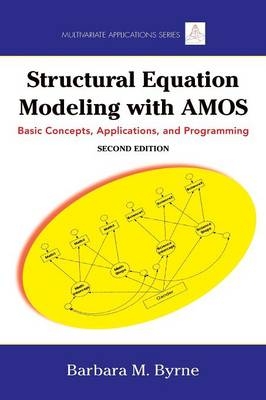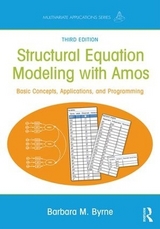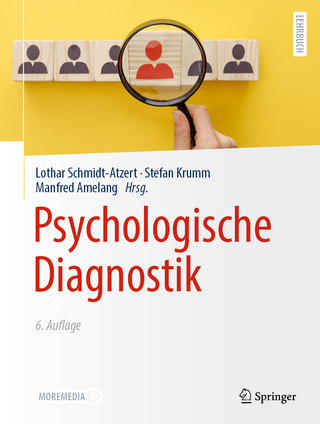
Structural Equation Modeling With AMOS
Routledge Academic (Verlag)
978-0-8058-6373-4 (ISBN)
- Titel erscheint in neuer Auflage
- Artikel merken
This bestselling text provides a practical guide to the basic concepts of structural equation modeling (SEM) and the AMOS program (Versions 17 & 18). The author reviews SEM applications based on actual data taken from her research. Noted for its non-mathematical language, this book is written for the novice SEM user. With each chapter, the author "walks" the reader through all steps involved in testing the SEM model including:
an explanation of the issues addressed
an illustration of the hypothesized and posthoc models tested
AMOS input and output with accompanying interpretation and explanation
The function of the AMOS toolbar icons and their related pull-down menus
The data and published reference upon which the model was based.
With over 50% new material, highlights of the new edition include:
All new screen shots featuring Version 17 of the AMOS program
All data files now available at www.routledge.com/9780805863734
Application of a multitrait-mulitimethod model, latent growth curve model, and second-order model based on categorical data
All applications based on the most commonly used graphical interface
The automated multi-group approach to testing for equivalence
The book opens with an introduction to the fundamental concepts of SEM and the basics of the AMOS program. The next 3 sections present applications that focus on single-group, multiple-group, and multitrait-mutimethod and latent growth curve models. The book concludes with a discussion about non-normal and missing (incomplete) data and two applications capable of addressing these issues.
Intended for researchers, practitioners, and students who use SEM and AMOS in their work, this book is an ideal resource for graduate level courses on SEM taught in departments of psychology, education, business, and other social and health sciences and/or as a supplement in courses on applied statistics, multivariate statistics, statistics II, intermediate or advanced statistics, and/or research design. Appropriate for those with limited or no previous exposure to SEM, a prerequisite of basic statistics through regression analysis is recommended.
University of Ottawa, Canada
Part 1. Introduction. 1. Structural Equation Models: The Basics. 2. Using the AMOS Program. Part 2. Applications in Single-Group Analyses. 3. Testing for the Factorial Validity of a Theoretical Construct (First-Order CFA Model). 4. Testing for the Factorial Validity of Scores from a Measuring Instrument (First-Order CFA Model). 5. Testing for the Factorial Validity of Scores from a Measuring Instrument (Second-order CFA Model). 6. Testing the Validity of a Causal Structure. Part 3. Applications in Multiple-Group Analyses. 7. Testing for the Factorial Equivalence of Scores from a Measuring Instrument (First-Order CFA Model). 8. Testing for the Equivalence of Latent Mean Structures (First-Order CFA Model). 9. Testing for the Equivalence of a Causal Structure. Part 4. Other Important Applications. 10. Testing for Construct Validity: The Multitrait-Multimethod Model. 11. Testing for Change Over Time: The Latent Growth Curve Model. Part 5. Other Important Topics. 12. Bootstrapping as an Aid to Nonnormal Data . 13. Addressing the Issue of Missing Data.
| Erscheint lt. Verlag | 17.9.2009 |
|---|---|
| Reihe/Serie | Multivariate Applications Series |
| Verlagsort | New York |
| Sprache | englisch |
| Maße | 152 x 229 mm |
| Gewicht | 680 g |
| Themenwelt | Geisteswissenschaften ► Psychologie |
| ISBN-10 | 0-8058-6373-7 / 0805863737 |
| ISBN-13 | 978-0-8058-6373-4 / 9780805863734 |
| Zustand | Neuware |
| Informationen gemäß Produktsicherheitsverordnung (GPSR) | |
| Haben Sie eine Frage zum Produkt? |
aus dem Bereich



